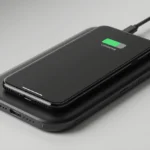A recent study by Kensington shows that people lose 70 million smartphones each year. And only 7% of them are recovered. Also, 4.3% of lost or stolen devices are company-issued smartphones. It means the loss of a device puts both personal and corporate data at risk.
One thing you can do to reduce the damage is to encrypt your Android device. It prevents intruders from accessing valuable data.
Why You Should Encrypt Your Device
Encryption is a complex security process enabled on all new smartphone devices. It transforms all media and information on the device into unreadable and scrambled bits of data. The only way to decrypt the content is to enter the security code or a lock screen pattern, depending on your security pin preferences.
If an encrypted device gets in the hands of the wrong people, they won’t be able to access any data without the decryption code. Thieves can still reset and sell the devices in most cases. But an extra layer of encryption prevents incidents such as corporate espionage, identity theft, or data exploitation for ads and profits.
Another reason you should encrypt your device is to prevent intruders from accessing your social media accounts. Your smartphone holds all your most valuable passwords and accounts. It means whoever gets to it first can often access your Gmail, Facebook, Instagram, or other apps.
Things to Consider Before You Start
Before you decide to encrypt your smartphone device, here are several things you should keep in mind:
- Most newer phones already come with encryption as a default setting. It means you don’t have to go through this process, but you also cannot disable the encryption in any way.
- Older operating systems might experience a slight drop in performance after enabling encryption. If the smartphone is newer, performance issues won’t be noticeable at all.
- Encryption is a one-way process. Once you get it done, you cannot reverse it unless you reset the phone to factory settings. It, however, would delete all media content on the device.
- If the device is rooted, you might need to unroot it temporarily to finish the encryption process and then re-root it again.
- The encryption process can take an hour or even longer. Make sure you have enough time to let the device finish the process. Interrupting it could cause the loss of your data.
- The device must have at least 80% of the battery power to initiate the encryption. You should also leave it plugged in throughout the whole process.
How to Start the Encryption Process
Now that you got the warnings out of the way, here’s how you can encrypt your Android device:
- Access the settings menu and tap on “security.”
- If the device is already encrypted, you will see it If not, you can tap the “encrypt phone” option to proceed.
- You will receive two warnings about the process. One tells you that it is irreversible (unless you reset to factory settings), and the other asks you not to interrupt the encryption.
- Click on the “encrypt phone” button again.
- The device will now reboot and initiate the process.
- A progress bar will show you an estimate of how long the process might take.
- Once complete, the phone will reboot again, and you’ll access it by entering your pin or security code.
Also read: DISM Host Servicing Process | Fix DismHost.exe High Disk Usage
More Security Measures
Once you finish encrypting your device, consider taking some extra steps to ensure the security of your device.
You should begin by installing an Android password manager. It can help you create stronger passwords and store them in an encrypted location to prevent unauthorized access. It would also sync all passwords, so in case you lost the device, you could still access them on PC or browser.
Android users can also set passwords on their SD cards to secure their content in case the intruder removes the card. Some devices allow SD cards to be fully encrypted. If that’s not the case, you can encrypt the SD card on your computer.
The default Android encryption process (the one described above) only encrypts onboard storage. So if you want to secure the media content on the SD card, consider locking it with a password through Android settings.
In the end, these safety measures won’t prevent you from losing a device. But they will reduce the risk of data theft and corporate espionage by restricting unauthorized access.











